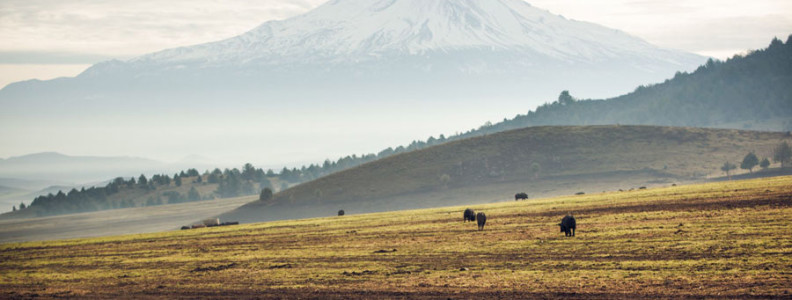Thirty seconds after I met Anya Fernald, the co-founder and C.E.O. of Belcampo, a sustainable-meat company whose ambition is to seduce Americans away from industrial food, she offered me a plate of lamb tartare. Fernald is thirty-nine and nearly six feet tall, with growing-out ombré hair and the exuberant energy of a team of wayward ponies; we were sitting at the counter of a butcher shop and restaurant she had recently opened in downtown Los Angeles.
Something that a retired U.S.D.A. safety expert had once told me about raw lamb, stored grain, barn cats, and Toxoplasma gondii was ricocheting around my brain. Fernald looked at me quizzically and immediately delivered a mug of bone broth, a grayish, mildly animal brew that tasted how I imagine stone soup would. If I am ever recovering from hypothermia, I hope there is some handy. Then we split a succulent twelve-and-a-half-dollar steak-grind burger with homemade ketchup, and a Moroccan-flavored goat-leg sandwich.
The shop—a butcher case and a counter with six seats—is in Grand Central Market, a covered food court opened in 1917 and filled with sellers of Mexicanmole, neon signs for chop suey, and macadamia-nut lattes: the Harrods of Los Angeles. Fernald told me that the first time she saw the place she thought, “Boom, I want to do that. I want to be a brand from the nineteen-twenties, a late-agricultural or pre-industrial brand.” In 1920, she says, people ate four ounces of meat every three or four days; they all had a tub of lard in the cupboard; and their hips were wider than their waists. (Today, the average American male eats 6.9 ounces of meat a day, and women eat 4.4. Lard has all but disappeared, and so have waistlines.) The location was a winner: between demand from Latin-American grandmothers and adventurous young urbanites, Fernald was selling four or five lambs’ heads a week. The chef, a CrossFit trainer, had attracted a muscular, grain-averse crowd. One diner customized a bunless sandwich of lardo smeared on headcheese.

